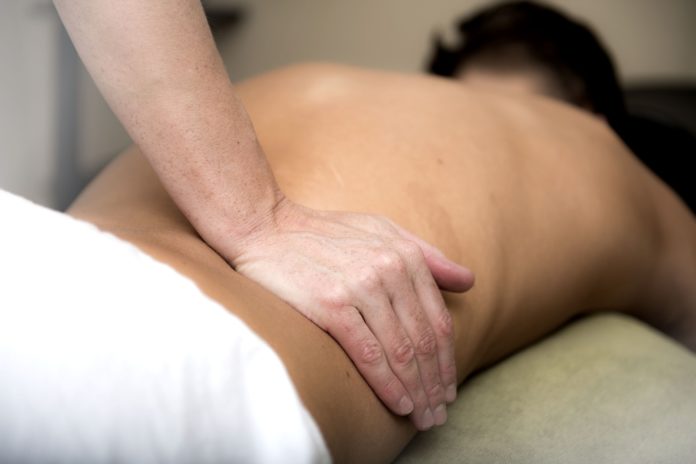by Kari Lambden PT, Cert. MDT
Research has shown that staying active helps to provide pain relief and maintain function. If you are not sure what types of activities are safe for you, seek advice from a physiotherapist. A well-trained physiotherapist (hopefully trained in MDT – Mechanical Diagnosis and Therapy) will be able to diagnose your type of back pain, educate you on the causes, aggravating / easing factors, and provide a prognosis for your recovery. Your therapist will help to alleviate any fears and anxiety you might experience regarding your pain and give you reassurance that it is safe to move and be active. You can expect to be given some specific exercises, movements, or postures that will help reduce the mechanical strain on your tissues and promote healing. Most patients start noticing decreased pain and increased range of movement on the first visit. Our goal is that improvements should be obvious by the third visit. Treatments focus on movement and exercise but may also include core exercises, ergonomic and lifting advice, manual therapy, acupuncture or other modalities. The focus is to get you moving comfortably again and to be able to self-treat for the long term. If we do our job well, you need us less over time, not more.
Frequently Asked Questions
Q: Should I rest?
A: While you might need to modify your activities at first, for people with new onset low back pain, staying active helps to provide pain relief and maintain function. There is also evidence that people with long term back pain do better when they participate in exercise than they do with rest. People who have back pain with referred pain down their leg (also known as sciatica) tend to have about the same level of pain and function whether they stay in bed or not. However, given that bed rest also comes with the risk of complications, staying active is the better option. Keep moving to recover more quickly.
Q: Should I get an X-Ray, CT Scan or MRI to find out what’s going on before I start therapy?
A: A mechanic does not figure out what is wrong with a car by taking a picture of the engine, and a physiotherapist also does not depend on a picture (i.e. X-Ray,CT, MRI) to figure out what is wrong with your back. These diagnostic tests are one piece of the puzzle, but the tests are static and are not as helpful as many believe to diagnose a problem with movement. Moreover, these tests do not help you to feel better, expose you to potentially harmful radiation and may lead to unnecessary treatment. Research shows that findings on an MRI do not correlate well with back pain severity or the need for treatment. Many abnormal findings occur in healthy people with no history of back pain, meaning these tests are not very useful to identify the cause of back pain. Unless we are trying to rule out a serious pathology (see below), diagnostic imaging does not help guide treatment, improve your care or outcomes and is not recommended.
Q: Does the amount of pain = the amount of damage?
A: Pain is an individual experience that is processed in the brain. Pain is a warning signal humans have developed that triggers us to pay attention. Similar to a smoke alarm in your house. The smoke alarm is the same no matter if your house is burning down or if you burn the toast. We can not always rely on our pain symptoms alone to determine how much damage there is at the tissue level. Think of chronic pain or phantom limb pain. Both situations where no acute tissue damage is present but severe pain still exists. In addition, the intensity of pain can be highly influenced by other factors such as stress, fear, anxiety, family history, previous experiences with pain etc. Short answer: NO, the amount of pain does not = the amount of damage. It is only one piece of the puzzle.
Q: Should I see a surgeon about my back pain?
A: Unless there is a serious pathology (see below) most people with mechanical, musculoskeletal low back pain won’t benefit from surgery. The evidence suggests that physiotherapy rehabilitation is just as effective as surgery in most cases. Surgery also comes with the risk of complications, such as infection, further injury caused by the surgery itself and the need for repeat surgery. In addition, rehabilitation needs to be done post surgery anyway. For these reasons, surgery should not be used as a first resort for treatment of back pain.
Q: What about massage, spinal manipulation, dry needling, acupuncture, traction, ultrasound, TNS?
A: Passive techniques listed above may provide short-term pain relief, however an active approach that includes exercise more effectively reduces pain and disability and provides long term results. Without a strong focus on active treatment (movement, posture, stretching, strengthening) our injured tissues will not be able to cope with the daily load of our busy lives. The treatment should focus on the exercise component not the passive component. Research shows movement and exercise reduces pain and disability better than any other intervention for back pain.
Causes for concern:
Get medical care immediately if you have severe back pain that:
- Is unrelenting and unchanging with different movements or positions
- Is associated with progressive weakness, numbness or tingling in both legs
- Is associated with new bowel or bladder problems
- Is accompanied by fever
- Is associated with pain or throbbing in the abdomen
- Is accompanied by unexplained weight loss
Make an appointment with your doctor if you have severe back pain that:
- Follows a fall, blow to your back, or other injury
- Worsens during rest or at night
Also, see your doctor if you start having back pain for the first time after age 50, or if you have a history of cancer, osteoporosis, steroid use, or drug or alcohol abuse.
SUMMARY:
Low Back Pain is extremely common, and most people suffer with it at some point in life. X-Rays or MRI scans do not help to inform treatment and instead should only be used if there is a high suspicion of serious pathology. The intensity of pain depends on many factors including emotional factors and does not necessarily correlate directly with the amount of “damage”. International best practise guidelines for back pain recommend exercise under the guidance of a clinician as the best treatment for back pain. It is acknowledged that education regarding back pain is also a powerful factor in recovering from back pain. Treatment with medication is not recommended and should only be given briefly and with care. Learn what to do about your back pain. Don’t wait! See a physiotherapist.










